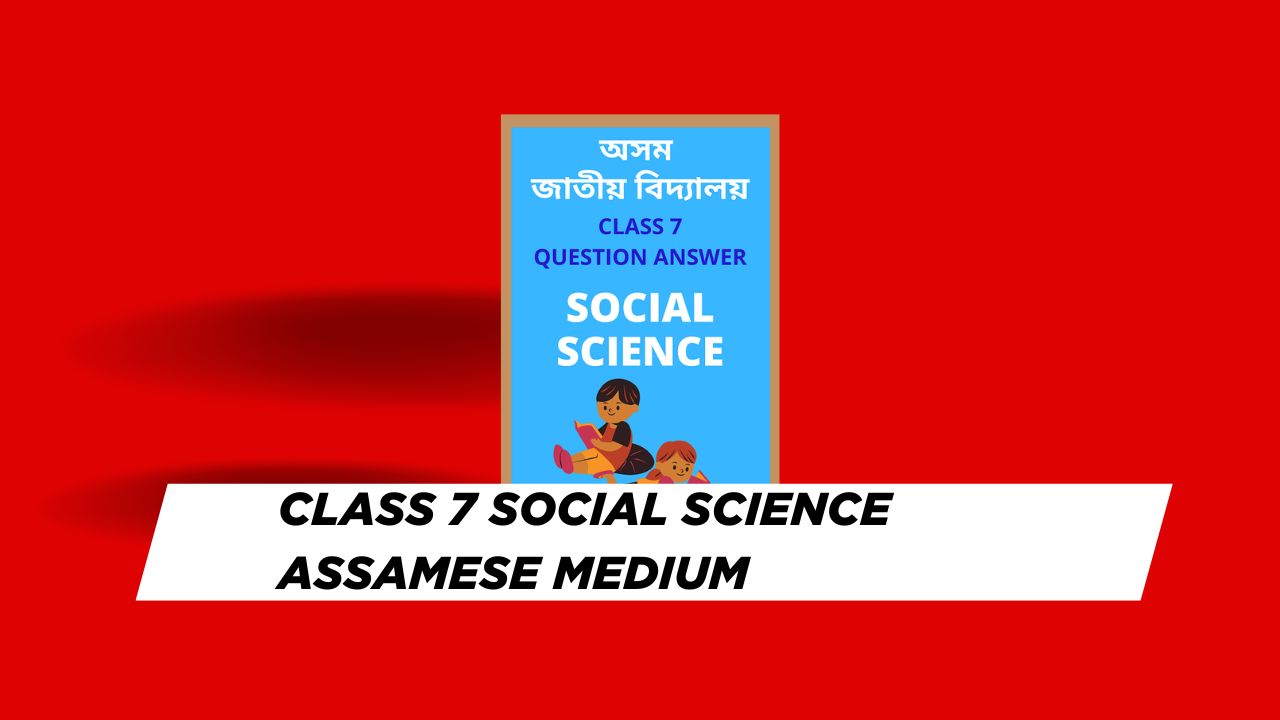
Class 7 is a crucial year for students in Assam.
The Social Science curriculum, taught in Assamese medium, provides foundational knowledge about our society, history, and environment.
This guide offers a complete overview of the syllabus, textbook structure, and effective study strategies to help students excel in this subject.
Contents
- 1 Understanding the SEBA Class 7 Social Science Curriculum
- 2 Geography: Exploring Our World
- 3 History: Tracing Our Past
- 4 Civics: Understanding Society and Governance
- 5 Textbook Structure and Features
- 6 Effective Study Strategies
- 7 Importance of Social Science in Class 7
- 8 Expert Insight
- 9 Interesting Stat
- 10 Frequently Asked Questions (FAQs)
- 11 Final Thoughts
Understanding the SEBA Class 7 Social Science Curriculum
The Board of Secondary Education, Assam (SEBA) designs the Class 7 Social Science syllabus to help students understand how society functions and how history has shaped the present.
The subject is divided into three major parts:
-
Geography (ভূগোল)
-
History (ইতিহাস)
-
Civics (নাগৰিক শিক্ষা)
Each part develops thinking skills, awareness, and an understanding of the real world.
Geography: Exploring Our World
The Geography section introduces students to the Earth’s structure, resources, and environment.
Key topics include:
-
Time Calculation on Earth’s Surface (ভূ-পৃষ্ঠত সময় গণনা)
-
Internal Structure of the Earth (পৃথিৱীৰ অভ্যন্তৰ ভাগ)
-
Surface Features and Their Changes (পৃথিৱীৰ উপৰিভাগ আৰু ইয়াৰ পৰিৱৰ্তন)
-
Our Environment (আমাৰ পৰিৱেশ)
-
Human-Made Environment (মানৱ সৃষ্ট পৰিৱেশ)
-
Resources (সম্পদ)
-
Our Resources (আমাৰ সম্পদ)
-
Northeast India (উত্তৰ-পূব ভাৰত)
-
India’s Climate, Natural Vegetation, Agriculture, and Population (ভাৰতৰ জলবায়ু, প্ৰাকৃতিক উদ্ভিদ, কৃষি আৰু জনসংখ্যা)
This section helps students see the connection between people and the environment.
History: Tracing Our Past
The History section talks about past events, rulers, and how cultures evolved over time.
Main chapters include:
-
Post-Mauryan India (মৌৰ্য যুগৰ পৰৱৰ্তী ভাৰতবৰ্ষ)
-
Rise of the Gupta Empire (গুপ্ত সাম্ৰাজ্যৰ উত্থান)
-
Post-Gupta India (গুপ্তযুগৰ পৰৱৰ্তী ভাৰতবৰ্ষ)
-
Prehistoric Assam (প্ৰাক ঐতিহাসিক অসম)
-
Medieval India (মধ্যযুগত ভাৰতবৰ্ষ)
It allows students to understand the roots of today’s society and how Assam’s history fits into the national timeline.
Civics: Understanding Society and Governance
The Civics section teaches about democracy, governments, and the rights and duties of citizens.
Important chapters include:
-
Democracy and Citizenship (গণতন্ত্ৰ নাগৰিক আৰু নাগৰিকত্ব)
-
Elections and Electoral Process (নিৰ্বাচন আৰু নিৰ্বাচনী প্ৰক্ৰিয়া)
-
Democracy and Media (গণতন্ত্ৰ আৰু প্ৰচাৰ মাধ্যম)
-
Marginalized Groups and Democratic Rights (প্ৰান্তীয় গোট আৰু গণতান্ত্ৰিক অধিকাৰ)
This helps students become socially responsible and informed citizens.
Textbook Structure and Features
The textbook is designed to be simple and effective for Assamese-medium learners.
-
Chapter-wise Format: Each chapter is focused on one topic.
-
Illustrations and Maps: These help explain difficult ideas easily.
-
Questions and Activities: Exercises help students test their learning.
The structure helps students grasp important concepts clearly and prepare for exams with confidence.
Effective Study Strategies
Here are some easy and practical tips to improve in Social Science:
-
Daily Reading – Read chapters regularly to stay consistent.
-
Make Short Notes – Write key points in simple words.
-
Practice Questions – Solve exercises after each chapter.
-
Revise Weekly – Review your notes and important topics every week.
-
Use Diagrams and Mind Maps – Visual tools make remembering easier.
Regular practice will help build confidence and reduce exam stress.
Importance of Social Science in Class 7
Here’s why Social Science matters:
-
Builds Awareness: Students learn about the country, society, and world.
-
Improves Thinking: Topics like governance and environment develop logical thinking.
-
Develops Personality: It teaches students about values, rights, and responsibilities.
A strong foundation in Social Science helps students in higher classes and in daily life.
Expert Insight
“Social Science at an early stage builds a child’s worldview. It’s not just about dates and maps. It teaches empathy, logic, and civic sense.”
— Dr. Anupama Sharma, Senior Educator, Guwahati
Interesting Stat
🧠 A recent survey in Assam found that students who revised Social Science twice a week scored 23% higher in exams compared to others.
Consistency beats cramming.
Frequently Asked Questions (FAQs)
Q1: What is the best way to remember historical dates?
A: Use timeline charts and link events to interesting facts or visuals.
Q2: How to make Civics chapters more interesting?
A: Relate topics to real-life news and events you see around you.
Q3: Is it important to study maps and diagrams?
A: Yes, many questions in exams are based on maps and picture-based questions.
Q4: Can I prepare for exams without tuition?
A: Absolutely! With regular self-study and notes, you can score well.
Final Thoughts
Class 7 Social Science in Assamese medium is not just about memorizing chapters—it’s about understanding the world around you.
When students approach the subject with curiosity and consistency, they naturally perform better in exams and develop a broader worldview.
Take it one chapter at a time.
Stay consistent.
And remember, your understanding today builds the foundation of your future.

